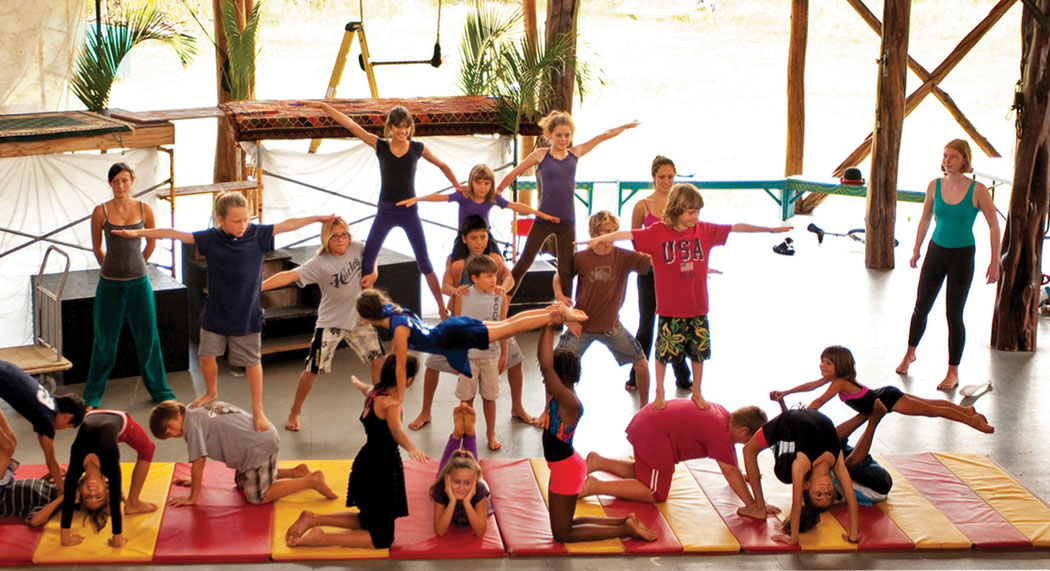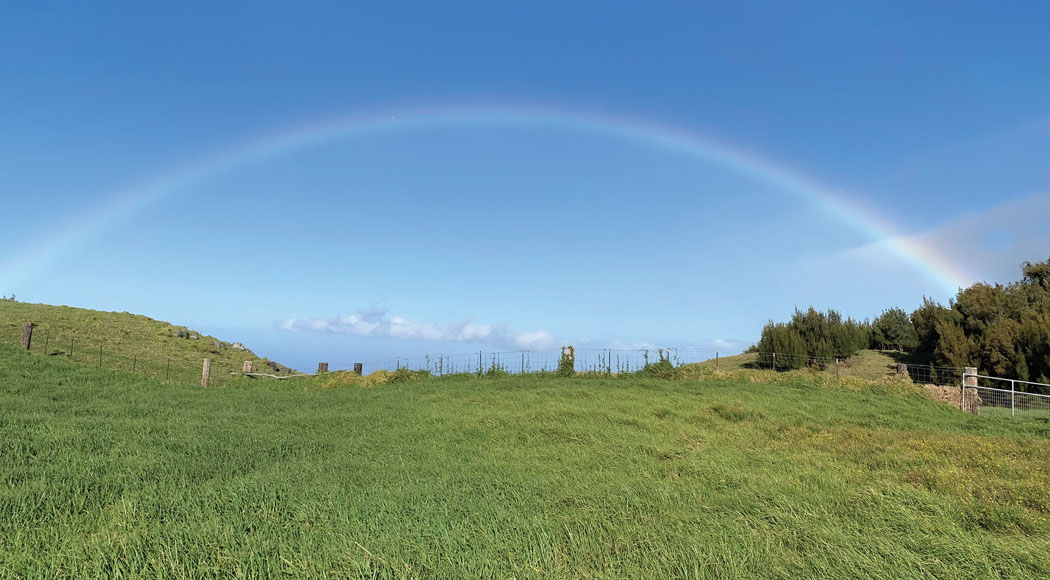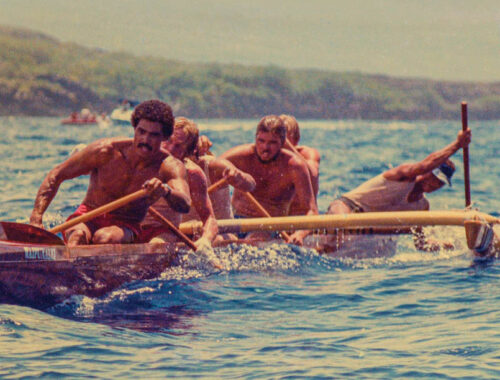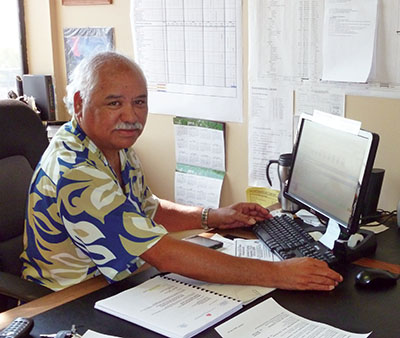
Ko Bo Kahui Ho‘oilina Ola: Bo Kahui’s Living Legacy
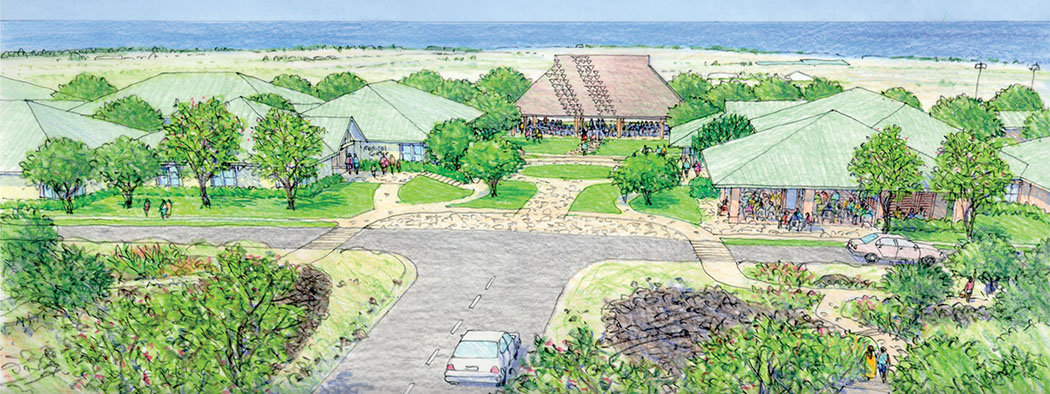 By Gayle ‘Kaleilehua’ Greco
By Gayle ‘Kaleilehua’ Greco
One person can make a difference, and everyone should try,” said John F. Kennedy in his 1961 inaugural address. Craig ‘Bo’ Kahui was seven years old at the time and living in Kalihi on O‘ahu. One of eight children, they lived in an urban neighborhood adjacent to central Honolulu, surrounded by government assisted housing. It was here Bo saw the affects of not having community resources to support the people. An ethnic mix of mid-to-low income families, some multi-generational and some single parents, blended together with a crowded school system and an uncertain job market, created stress on an otherwise content ‘ohana.
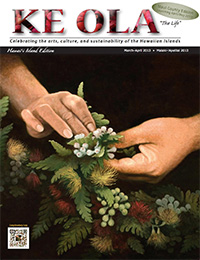
Bo’s watchful eye and heavy heart witnessed the strain that enveloped his family as they succumbed to the societal pressure. Making his way through school, seeing his brothers fall to the temptations of substance abuse and alcoholism, Bo knew he had to get out of the system that held no future for him. In 1972, he enlisted in the Navy, and it was there Bo saw the possibilities of life. He experienced the diversity only world travel can show you, the lives and cultures of many different countries—the positive aspects and the difficulties. This young Hawaiian was far away from home looking at the world through lenses that seemed to open his eyes to the promise of something more.
When Bo returned to Kalihi in 1975, he had come full circle, leaving as a young man and returning as a more seasoned adult. Expecting a shift from the wide-eyed experiences he had, Bo was surprised to find that nothing had changed in his neighborhood. In fact, everything and everyone was still the same. His ‘ohana had suffered greatly in the years as his brothers and friends went deeper into the cracks of the fallen.
In reacquainting himself with the community, Bo met up with a friend who lived in Mililani, a town 18 miles north of Kalihi. Mililani is a community with all the amenities for their residents. It was here Bo realized what he had been sensing and observing throughout his military tour and in life—other people had support systems, the children had recreational resources, and the adults had convenient services. Bo reflected on his Hawaiian lineage and recalled he knew what was needed: this town had a pu‘uhonua (an area of safety and peace), and he kept this in his vision—something that would later become part of his living legacy.
Saving an Island
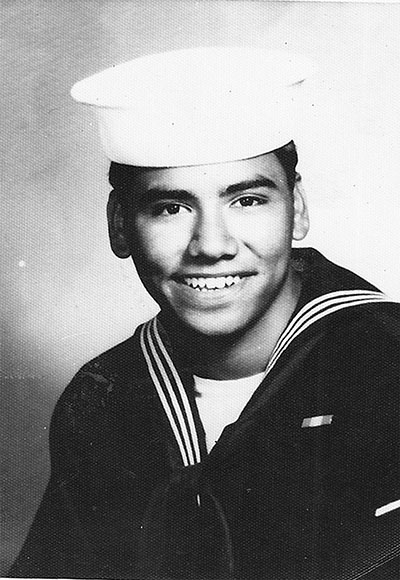
Being back in Honolulu after his military duty, Bo enrolled in Honolulu Community College. He expressed, “I was looking for my own Hawaiian identity. I was searching. Coming back home after the service, I was still lost; I didn’t know who I was. I didn’t even know my own language. I asked, what is my role, what is my purpose?” In his quest for his ancestral identity, Bo’s awareness turned to a group of native Hawaiians who were striving to protect Kaho‘olawe, the Hawaiian Island being used by the U.S. Navy for live-fire training exercises.
From 1978-1981, Bo was one of the central figures in the mission known as the Kaho‘olawe ‘Ohana Project, the strategic plight of saving Kaho‘olawe. While chastised by some for his involvement, Bo stayed the course in following his belief that they could make a difference in saving this precious island. “Aloha ‘Āina,” was the outcry of the Kaho‘olawe ‘Ohana, and they took that deep-seeded truth to Washington D.C. After years of researching, campaigning, and speaking to the legislative committees, Bo and his fellowship were successful in strategically winning back the island.
In 1990, the U.S. Navy stopped their military exercises, and Kaho‘olawe was transferred to the jurisdiction of the State of Hawai‘i in 1994.
This event—the saving of the island—became one of Bo’s hallmark moments in life. Years later, while visiting Kaho‘olawe, Bo witnessed a group of school children on a field trip learning the history of the ravaged and resurged island. As Bo watched the children’s innocence in being taught this prominent piece of their culture, Bo reflects, “It dawned on me that what I did for the island was a rich experience of my life, and maybe this is my purpose: to do these programs.”
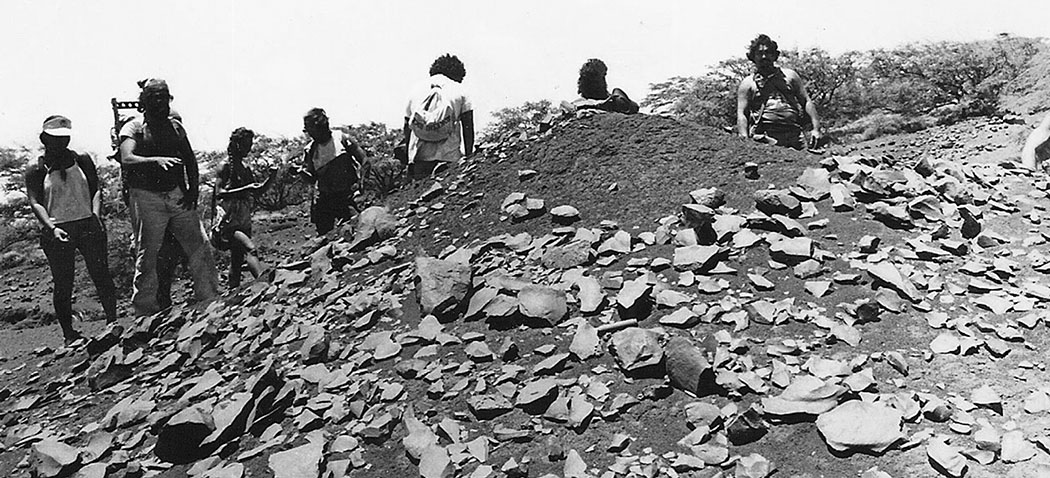
Cultivating the ‘Āina
As the Kaho‘olawe ‘Ohana Project grew to a close, Bo saw an opportunity to enhance the cultural teaching at the University of Hawai‘i. Bo knew, at the core of ‘ohana, is the ‘ohā, the shoot growing from the older root of the taro plant—the offspring, the youngsters. How was the origin of taro farming going to be preserved with the new generations in the urban areas?
In 1979, Bo and several friends discovered the abandoned ‘auwai (irrigation ditch) at Kanewai, adjacent to UH Mānoa. Many hours of hard labor and commitment transpired as they began cleaning up the land on their days off, unveiling the fresh water stream and dam that would become the lo‘i (taro patch). It took a few years to develop the farm, and when all was completed, this program provided the first taro cultivation curriculum for the university. Today, the Ka Papa Lo‘i o Kanewai is a Hawaiian cultural research and outreach program housed in the Hawai‘inuiakea School of Hawaiian Knowledge at UH Mānoa. Thousands of students have been served by the program, which offers a cultural experience in planting, crop rotation, harvesting, and cooking of taro. The ‘ohā is growing on the land and in the hearts and minds of the new generations.
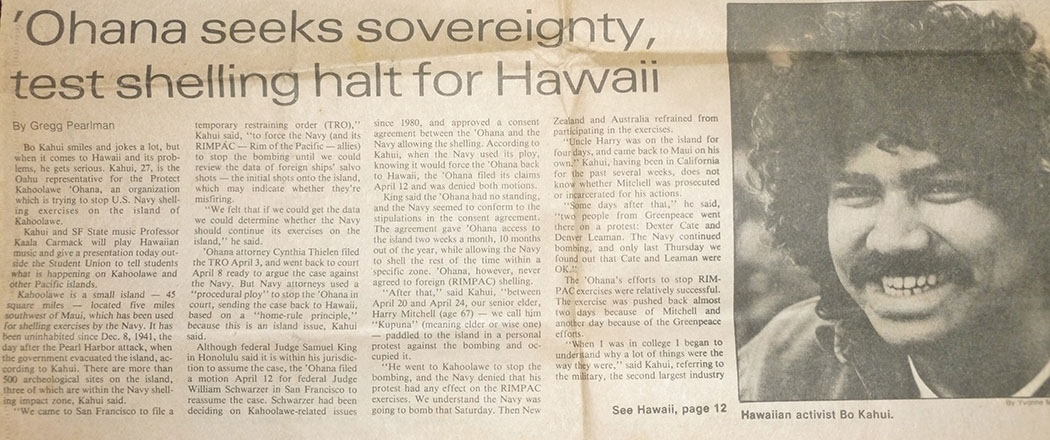
Destination: Hawai‘i Island
In 1998, Bo and his family moved from Hilo to Kailua-Kona where he acquired property in the Villages of La‘i ‘Ōpua, Native Hawaiian homelands in North Kona. Bo and five other families joined the DHHL self-help project and worked together to build each other’s houses. Proud and forthright, Bo had brought his family home to where they could live, go to school, and have their jobs. They had a community. And yet, in looking around, Bo felt his past in Kalihi eerily presenting itself in front of him. There were 225 homes in this development with a future projection of another 1000 units to be built. He looked at the plans, and realized that there was not a community infrastructure in place, and his past flashed before him as if in a déjà vu dream. Something needed to change.
While serving as the Kaniohale Community Association (KCA) President in 2002, Bo was also working as the Bailiff in the Third District Court. In the court system, Bo recounted, “You see the people struggling, and it brought back the urban issues for me; the justice system was trying to reconcile the downfall in our communities.” La‘i ‘Ōpua had a small community services room that allowed some of the residents to use the area for meetings, hālau gatherings, and recreation. At one point, they tried to hold computer classes in the community center, however, they had to set up the computers in the kitchen area and then take all the computers out whenever there was a function. Even in the infancy of this development, their needs had already outgrown the original community services facility.
La‘i ‘Ōpua 2020
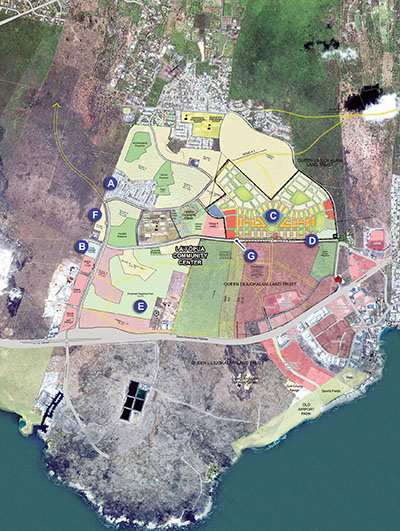
Bo set out to assist in the incorporation of a nonprofit organization to plan for the growth in his neighborhood community. After being awarded State and Federal nonprofit status, Bo, as President of KCA, applied for and won a $125,000 grant for the vision of La‘i ‘Ōpua.
Bo could see the vision of La‘i ‘Ōpua come to life as he had meetings with community and political groups. He also understood that it would take a full time effort to bring the project to fruition. He made the decision to quit his State job and devote a permanent commitment to develop and manage the funding campaigns for what is now known as La‘i ‘Ōpua 2020. People close to him doubted his move, as he would be not earning a consistent income during the time. And yet, Bo related, “My satisfaction is that one day we will make this happen—a brighter and better place, offering a quality of life that is worthy of the community.”
Today, Bo is the Executive Director of La‘i ‘Ōpua 2020 with a modest staff of two, and has raised with its partners, over $8 million to date for the first phase of this development project. From the streets of Kalihi to the shores of North Kona, Bo has brought full circle the creation of a community infrastructure that will provide for the social and educational needs of its residents and surrounding areas.

The vision for La‘i ‘Ōpua 2020 is built on an urgent need for a gathering place, formed from the cultural and spiritual values inherent in the land and people of Hawai‘i. Their goal is to ensure the existence of adequate health care, social service, and recreational facilities to complement and support the Native Hawaiian homesteaders and nearby populace residing in the greater Kealakehe community. With 275 homes resided in at Villages of La’i ‘Ōpua, there is an additional 2,300 mixed-use units planned for the Forest City Villages at Keahuolu, and 975 units planned for the Villages of La‘i ‘Ōpua—a total of over 3,500 residential units in need of a community infrastructure to support its residents.
Serving as a model for emerging communities statewide, La‘i ‘Ōpua 2020 includes the Community Center—a 52,000 square-foot complex facility, which will offer an array of programs and services to meet almost every health, social, educational, and recreational need of the community and its surrounding neighbors.
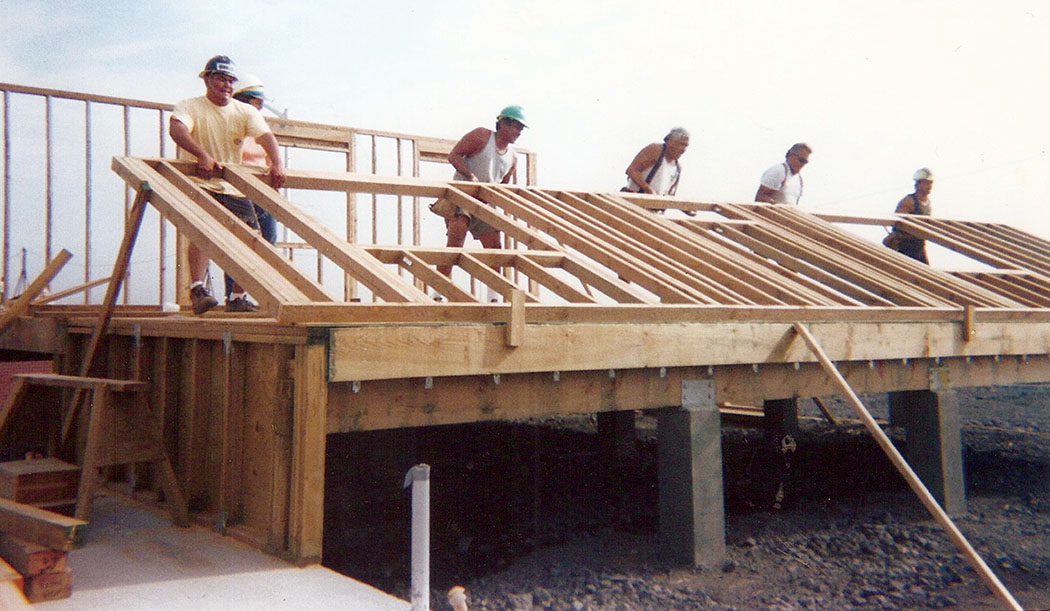
Power of Partnerships
La‘i ‘Ōpua 2020 is partnering with several local agencies and organizations to provide these valuable services and programs together in one place. The West Hawai‘i Community Health Center is committed to bring medical, dental, behavior health, family planning, and health education to La‘i ‘Ōpua. The WHCHC will have a 26,000 square foot medical center and the ability to stabilize patients and call ambulatory transportation assistance. Plans are also underway for Kamehameha Schools to build a state of the art preschool on two acres of the Center’s grounds. In addition to the Community Center, medical clinic, and preschool, La‘i ‘Ōpua will host a social service center, inter-generation daycare facility, abuse shelter, community gymnasium, aquatic center, and amphitheatre. A further $16 million is needed to uphold this first-phase conceptual plan. Without the necessary funding, the current and proposed residential units will be an example of unintended socioeconomic housing that leaves the people disconnected from the services that would unify them as a community. Having seen the effects of this in his lifetime, Bo has vowed to do what he can to educate and lead a proactive effort to benefit the growing population of Hawai‘i Island.
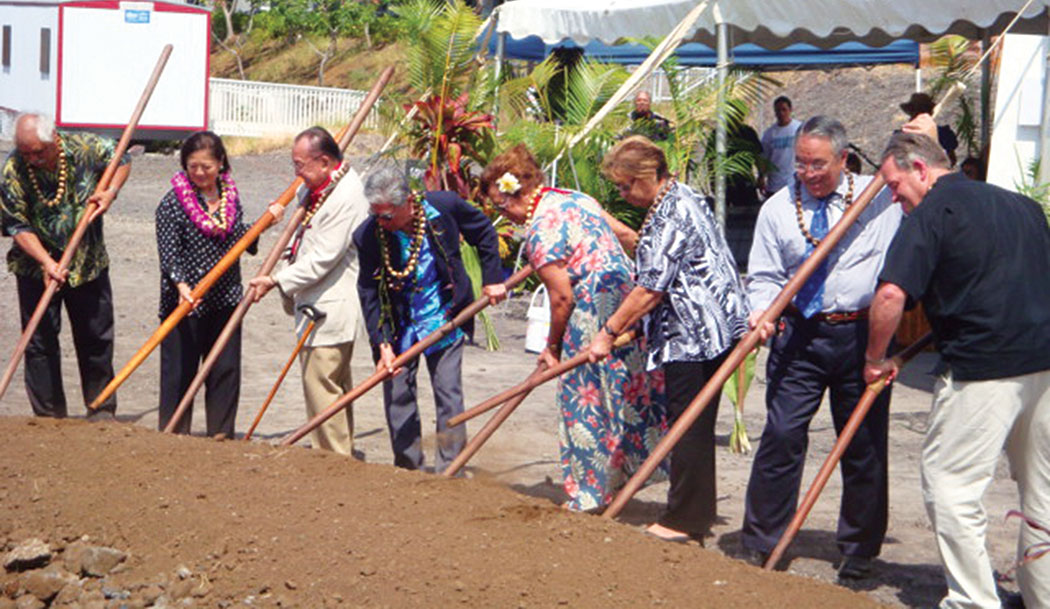
Living Heritage
At some point in our lives, there comes a time of reflection as to what is our purpose, what is our legacy. Craig ‘Bo’ Kahui has lived and answered that question many times over. Looking out beyond the confines of his office, he sees the prospect of something bright and worthy of his Native Hawaiian heritage—a deeper sense of community in a place where everyone deserves a promising future. ❖
For more information about La‘i ‘Ōpua 2020: LaiOpua.org
Contact Craig ‘Bo’ Kahui: bokahui@yahoo.com, 808.327.1221
Contact writer Gayle ‘Kaleilehua’ Greco: gayle.greco@gmail.com
Photos by: Craig ‘Bo’ Kahui and Gayle ‘Kaleilehua’ Greco
